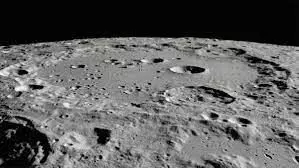
Water in tiny beads found across the moon, study
text_fieldsContrary to popular belief, scientists have found water across the surface of the moon. These microscopic droplets of water are trapped in tiny beads found on the lunar surface.
Samples proving this claim were brought back by China's Chang's 5 mission. Experts said the beads embedded in the moon's surface contained "substantial quantities of water". They think the discovery may help humans better understand the moon and help space missions use the satellite as a habitat.
According to the team's calculations, these beads are spread across the moon's surface and might be storing up to 270 billion tonnes of water. Scientists are calling it a "huge reservoir". "The impact glass beads preserve hydration signatures and display water abundance profiles consistent with the inward diffusion of solar wind-derived water," said the paper published in Nature Geoscience.
There are several theories about the presence of water on the Moon because until a few decades ago, the celestial body was believed to be dry.
These beads are crucial to the lunar surface's water cycle. It is not clear how water will behave once it reaches the Moon. These beads are made when an asteroid strikes the lunar surface and produces molten droplets which then freeze and mix with soil and dust. Some research shows that the water in its vapourised form fluctuates throughout the day and disappears into space. This hints that the soil on the Moon has some sort of storage.
Researchers suspect that the water source may have drawn contributions from solar wind implantation, outgassing of volatiles during lunar volcanism, deposition of volatile-bearing pyroclastic deposits, and impacts of comets among others. But they agree that the precise origin of the water on the Moon is "largely unknown."
























